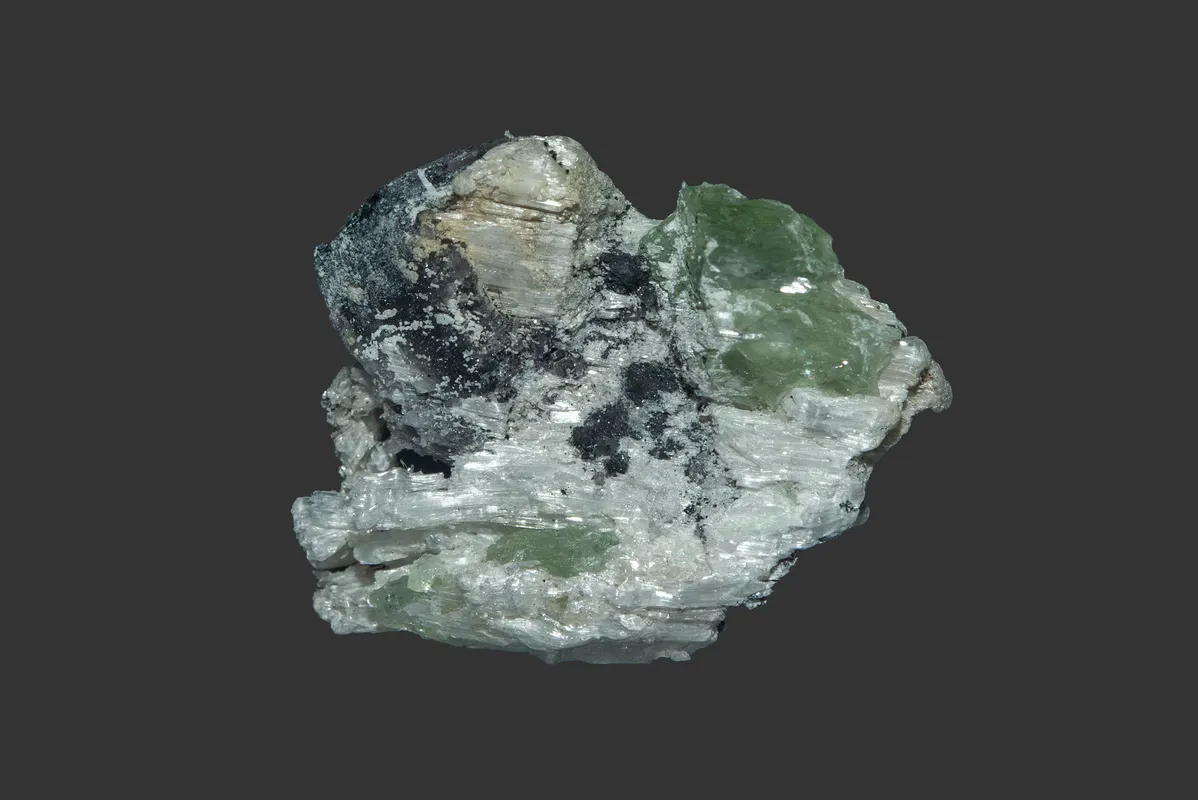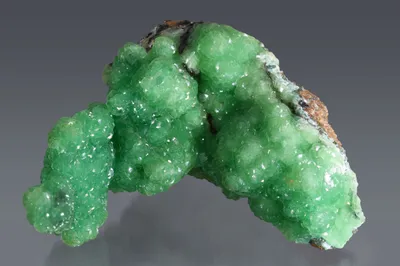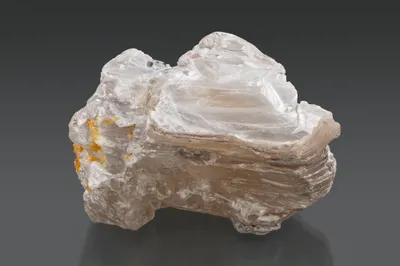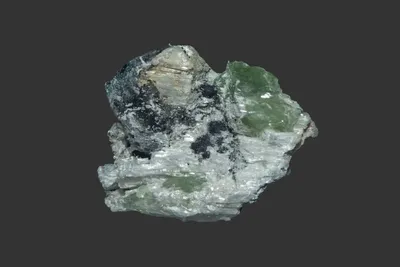
Image Credit: Malcolm Southwood
Mineral Species
Reinerite
Type Locality
Yes
Composition
Zn3(AsO3)2
Crystal System
Orthorhombic
Status at Tsumeb
Confirmed (type locality)
Abundance
Extremely rare
Distribution
Second and third oxidation zones
Paragenesis
Supergene
Entry Number
Species; TSNB299
Type Mineralogy
Reinerite was the first arsenite described from Tsumeb, shortly after mining operations penetrated the second oxidation zone. The type specimen is from a cavity in bornite-chalcocite ore approximately 10 m below 29 Level. Reinerite is an IMA-approved mineral with "Grandfathered" status (http://cnmnc.units.it/; accessed January 2023), described by Geier and Webb (1958). It was named for Willy Reiner, an analytical chemist working at Tsumeb in the 1950s, who was the first to analyse the new mineral. The structure of reinerite was refined by Weber (1966) and by Ghose et al. (1977). Type material is conserved at Ecole Nationale Supérieure des Mines, Musée de Minéralogie, Paris (catalogue number 50963) and at the Institut für Mineralogie und Kristallographie, Technische Universität, Berlin (catalogue numbers 94/32; 86/70 and 86/71).
General Notes
Three occurrences of reinerite at Tsumeb are of particular importance, although it should be noted that additional finds were made in both the second and third oxidation zones. The earliest discovery, from which the mineral was described, was in 1958 on a sublevel some 10 meters below 29 Level, in the second oxidation zone. The type assemblage consisted of reinerite crystals associated with adamite, hemimorphite, hydrozincite, olivenite and smithsonite on a sulphide matrix comprising bornite and chalcocite (Geier and Weber 1958). This early find arguably produced the most attractive crystals of the species, relatively well-formed and typically blue-green, sea-green, or pale green in colour.
Strunz (1959) recorded two specimens of reinerite from 30 Level, one occurring with mimetite needles in a cavity in renierite and the other in tennantite. Crystallographic drawings of the reinerite crystals from 30 Level were figured by Strunz (1959; page 88).
A second important discovery was made in 1977 by Georg Gebhard, also in the second oxidation zone. Here, pale green reinerite crystals (to 20 mm) occurred with fraipontite, hematite, mimetite, quartz, smithsonite, and a new mineral—also an arsenite—that was later described as gebhardite (Medenbach et al. 1983b; Gebhard 1999).
Finally, excellent crystals of reinerite were found in the early 1990s, on 44 Level in the third oxidation zone, in the discovery known as the "Zinc Pocket". Here, reinerite occurred as well-formed, pale sea-green crystals, associated with adamite, legrandite, leiteite, paradamite, and smithsonite, among others (Gebhard 1999).
Although reinerite was the first naturally occurring arsenite to be discovered at Tsumeb, several more have followed, including minerals such as gebhardite, leiteite, ludlockite, and schneiderhöhnite. With each of these minerals, the arsenic occurs in its intermediate As (III) oxidation state, indicating crystallization under somewhat reducing conditions (Southwood 2016). It seems plausible that the deeper (second and third) oxidation zones at Tsumeb might facilitate the development of such conditions a little more readily than the near-surface first oxidation zone.
Potential for confusion between the names reinerite and renierite is noted.
Associated Minerals
adamite; bornite; chalcocite; fraipontite; gebhardite; hemimorphite; hydrozincite; ianbruceite; köttigite; legrandite; leiteite; ludlockite; paradamite; smithsonite; stottite; warikahnite; zincolivenite






